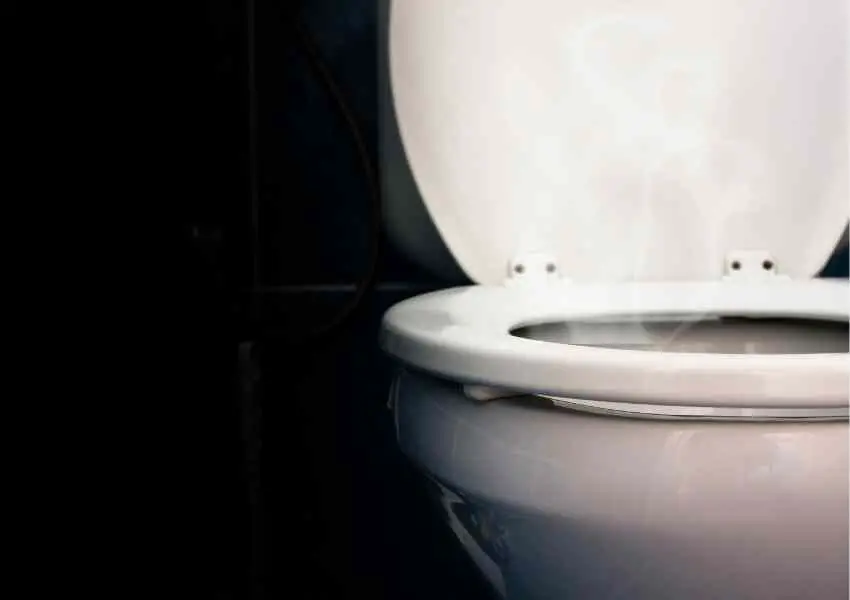As water conservation becomes increasingly important and climate change continues to significantly impact the world’s water resources, it’s natural to ask the question: Can toilet water evaporate?
While the answer to this question may depend on the type of toilet in question, it’s a question worth exploring in more detail. It’s important to understand the different ways that toilet water can evaporate, their potential impacts on the environment, and how to prevent it from happening.
This blog post will go into detail about these topics and look at the different ways that toilet water can evaporate. By learning more about how toilet water evaporates, homeowners can make smarter, more informed decisions about their water needs. Also, knowing what happens to toilet water when it evaporates can help make sure that efforts to save water work.

Can Toilet Water Evaporate?
Yes, toilet water can evaporate, just like any other type of water. The process of evaporation occurs when the water molecules in the toilet bowl absorb heat energy from their surroundings and turn it into vapor. This vapor then rises, leaving the toilet bowl dry.
What Are The Factors That Affect the Evaporation of Toilet Water?
The evaporation of toilet water is affected by a number of different factors. Temperature is one of the key variables, as warmer temperatures cause water to evaporate more quickly.
Humidity is another factor, as higher humidity levels can reduce the rate of evaporation. Also, the rate at which water evaporates can be affected by how fast the air moves since moving air can speed up the process.
Finally, the amount of water in the toilet bowl can affect the rate of evaporation, as a larger volume of water will take longer to evaporate.
How Much Water Is Lost Through Evaporation?
To answer the question of how much water is lost through evaporation, it is important to look at the various factors that affect evaporation. For example, the amount of water in the toilet, the temperature, humidity, and air circulation in the room, and the amount of time the toilet has been used.
Generally speaking, most toilets will lose a small amount of water through evaporation over a period of time. However, the amount lost will vary depending on the environment and other factors. If a toilet is used all the time, more water will evaporate, which means more water will be lost.
What is the impact of evaporation on the water level in the bowl?
It is true that evaporation can have an effect on the water level in a toilet bowl. When water evaporates, it leaves behind the minerals and other substances that were dissolved in it.
As the water evaporates, the concentration of these substances increases, and the water level in the bowl drops. This can eventually lead to clogging problems if the substances build up and block the water flow. If the bowl isn’t kept up well, too much water can also cause it to overflow and cause other problems.
How do I stop my toilet water from evaporating?
Toilet water evaporation is a common problem in households, especially during the summer months. It can lead to increased water bills and an unpleasant smell in the bathroom.
Fortunately, there are some simple steps you can take to prevent toilet water evaporation and save money on your water bill.
- First, make sure the toilet lid is always closed when not in use. This will help keep the water from evaporating as quickly.
- Second, use a toilet tank liner to insulate the water in the tank. This will help keep the water cooler and prevent it from evaporating as quickly.
- Third, install a low-flow toilet. Low-flow toilets use less water than traditional toilets, which means less water is lost to evaporation.
- Fourth, use a toilet tank displacement device. These devices fit inside the tank and displace some of the water, meaning less water is used for each flush.
- Finally, install a toilet sealant. This will create a barrier between the toilet and the air, which will help keep the water from evaporating as quickly.
By taking these simple steps, you can save money on your water bill and eliminate the unpleasant odor caused by toilet water evaporation. So don’t wait any longer – start saving money on your water bill today!
The impact of different temperatures on toilet water evaporation
The impact of temperature on toilet water evaporation is significant. Generally speaking, the higher the temperature, the faster the evaporation rate. This means that in hot climates, toilet water will evaporate faster than in cooler climates.
Interestingly, the rate of evaporation also depends on the ambient humidity. In dry climates, water will evaporate faster, while in humid climates, the rate will be slower. Toilet water will evaporate even faster if the toilet is located in a direct line of the sunlight.
Conclusion
In conclusion, it is possible for toilet water to evaporate, but the impact of its evaporation on water conservation is minimal. Toilet water evaporation is not a reliable method of conserving water, and it is not recommended as a way to reduce water consumption.
However, it is still important to use water efficiently, as it is a valuable resource that needs to be conserved.
